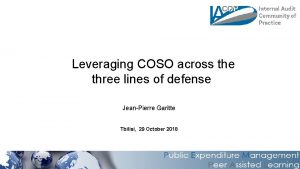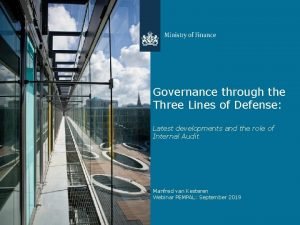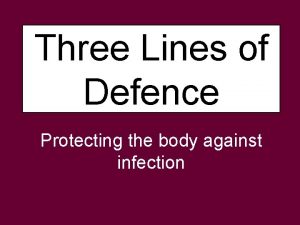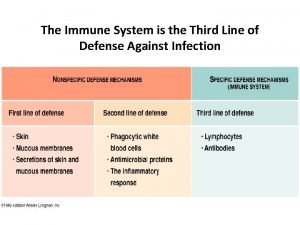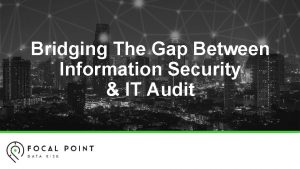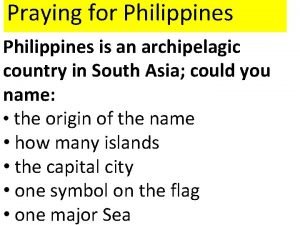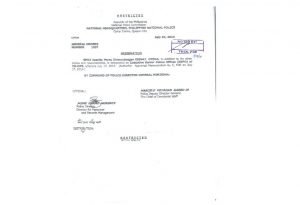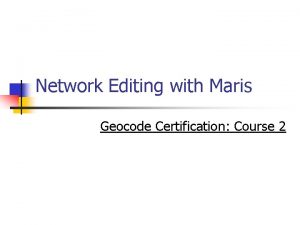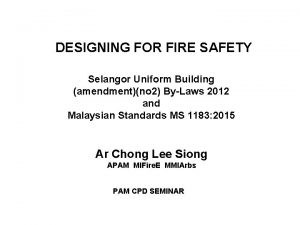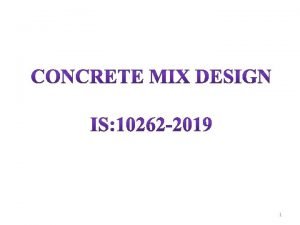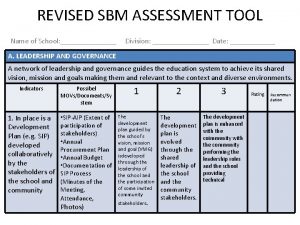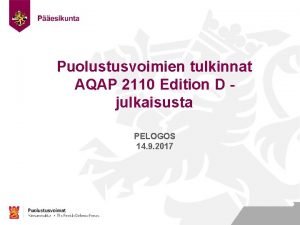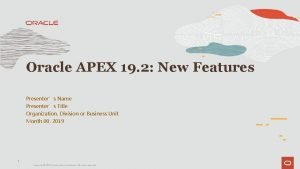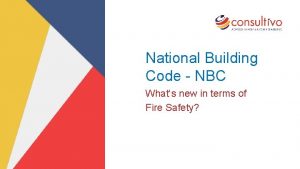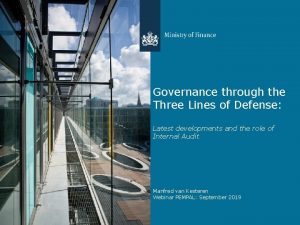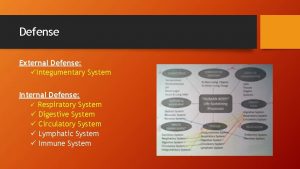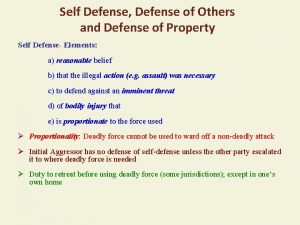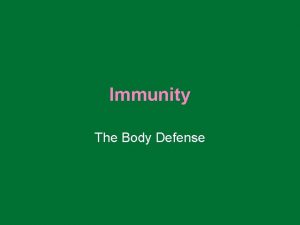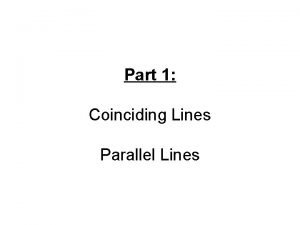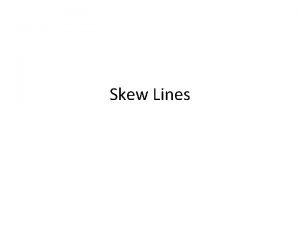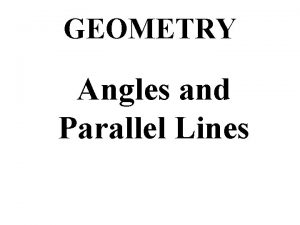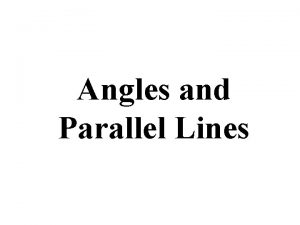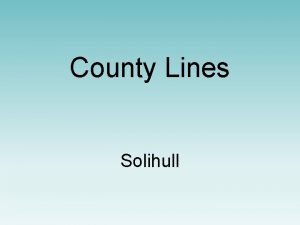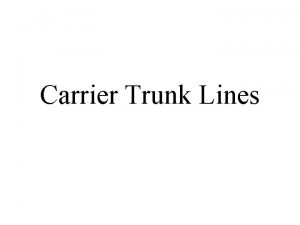Governance through the Three Lines of Defense Latest
















- Slides: 16

Governance through the Three Lines of Defense: Latest developments and the role of Internal Audit Manfred van Kesteren Webinar PEMPAL: September 2019

Governance, Risk and Control (GRC) Governance is the combination of processes and structures implemented by the board to inform, direct, manage, and monitor the activities of the organization toward the achievement of its objectives. Risk is the possibility of an event occurring that will have an impact on the achievement of objectives. Risk is measured in terms of impact and likelihood. Control is any action taken by management, the board, and other parties to manage risk and increase the likelihood that established objectives and goals will be achieved. Management plans, organizes, and directs the performance of sufficient actions to provide reasonable assurance that objectives and goals will be achieved.

Governance, Risk and Control (GRC): the Three Lines of Defense in Effective Risk Management and Control, (Altamonte Springs, FL: The Institute of Internal Auditors Inc, January 2013.

1 st line: Management Achieving organizational objectives. Making decisions, taking actions, maintaining personal conduct, and delivering outcomes aligned with the needs and interests of stakeholders efficiently, effectively, ethically, and sustainably within the range of variances and tolerances approved by the governing body. Assessing internal and external factors that may impact (whether positively or negatively) decisions, actions, behaviors, and outcomes. Establishing and operating systems of checks and balances that are designed to keep performance within the acceptable range of variances and tolerances. Keeping checks and balances up to date in the context of the current and likely future operating environment, and to repair them if they prove to be ineffective or defective, or to slacken or eliminate them if they are no longer necessary. Taking corrective action when decisions, actions, behaviors, and outcomes are falling short of expectations. Contributing to the design and development of policies with risk, quality, control, and compliance functions, and implementing and taking responsibility for those policies. Communicating direction received from the governing body down and across the organization. Setting tactics and performance indicators. Monitoring and analyzing activity. Reporting performance and forecasts to the governing body and providing assurance. Kyiv, April 2016

2 nd Line: Risk, quality, control, and compliance functions • • Analyzing known and identifying emerging issues that may impact decisions, actions, behaviors, and outcomes. Identifying changes in the organization’s implicit acceptance of variances and tolerances in performance. Assisting management in developing risk frameworks, processes, and controls to align performance with strategic goals, and identifying when controls are no longer necessary and can be relaxed or withdrawn altogether. Providing guidance and training on governance, risk management, and control processes. Facilitating and monitoring the implementation of effective risk management practices by management. Alerting management to emerging issues and changing regulatory requirements. Monitoring the adequacy and effectiveness of internal control, accuracy and completeness of reporting, compliance with laws and regulations, and timely remediation of deficiencies. Kyiv, April 2016

3 rd Line: Independent Internal Audit • • Providing assurance, opinions, insight, and advice on the adequacy and effectiveness of governance, risk management, and internal control. Undertaking risk-based internal audits and reviews aligned to strategic priorities and operational needs. Providing assurance, opinions, insight, and advice on the efficiency and effectiveness of operations, including the safeguarding of assets, and on the reliability and integrity of reporting processes. Providing assurance and opinions on the organization’s compliance functions and its compliance with laws, regulations, policies, procedures, and contracts. Assessing the influence of organizational culture and behavior. Contributing to the development of policies. Consulting with the governing body and management on emerging opportunities and threats. Reporting to the governing body and management. Kyiv, April 2016

The three lines of defense: relation with COSO Adapted from the Leveraging COSO Across the Three Lines of Defense, commissioned by The Committee of Sponsoring Organizations of the Treadway Committee (Lake Mary, FL: The Institute of Internal Auditors Inc and, July 2015).

Plusses of the Three Lines of Defense model: • The current model has the benefit of being simple, easy to communicate, and easy to understand; • It describes the respective roles of the board/governing body, senior and operational management, risk and compliance functions, and internal auditing; • It helps organizations avoid confusion, gaps, and overlaps when they assign responsibilities for risk management and control activities. It also highlights the influence of external audit and regulators.

But…. there is also criticism: • The model is too limited and too restrictive; • It focuses exclusively on defensive actions, not on a more proactive approach to the identification, analysis, and preparedness for both opportunities and threats; • It suggests rigid structures and creates a tendency toward operational silos, which can be less efficient and effective; • It’s not ‘fit’ for ever evolving, more complex organizations; • It limits the role of Internal Audit (trusted advisor vs. assurance)

Therefore: the IIA proposes an update 4 Area’s of Governance related to roles/responsibilities of the three lines: Leadership & Oversight Governing Body Strategy Execution Line Management Functions Overlapping / ‘Blurring’ of the Lines Objective Assurance Internal Audit Guidance, Challenge & Control Risk, Quality, Control and compliance functions

Key Features of the update: • Blurring of the lines: • 1 st and 2 nd line: strong(er) coordination/collaboration; • 2 nd line: strong(er) horizontal coordination/collaboration + information sharing; • 3 rd line: internal audit might ‘cross the line’ to 2 nd and 1 st line roles IF strict conditions are adhered to; • The smaller the organization, the more ‘blurring’. Regular communication, effective coordination and greater integration by: • Ensuring individual, team, and departmental goals are aligned with the strategic priorities and operational needs of the organization; • Ensuring a common understanding of the purpose and roles of each part of the organization; • Establishing a common vocabulary for describing aspects of governance, risk management, and control; • Using common rating or measurement systems across all functions; • Sharing resources, including subject matter experts, among functions; • Leveraging data and technology to facilitate insight capture, analysis, and communication.

Key Features of the update: Broadening Internal Audit’s focus towards so called ‘non assurance activities’ (in addition to assurance): • • Agreeing management decisions; Making recommendations Consulting on current circumstances and future actions Participating in change initiatives; Delivering training in risk-related topics; Leading control self-assessment sessions with management; Assurance mapping: to ensure that governance roles are well aligned with strategy and goals of the organization. Take managerial responsibilities in risk management and compliance (e. g. IF head of IA is assigned responsibility for compliance or ERM).

Safeguarding Measures for Non-Assurance assignments • Analyze the governance structure/avoid conflicting roles • Informing the governing body (e. g. AC) of nonassurance engagements that internal audit has been asked to undertake or managerial responsibilities it has been asked to assume, and communicate the impact these may have on the ability of the function to provide organization wide credible objective assurance; • Ensuring that nonassurance roles are clearly defined and, where possible, time limited; • Refraining from assuming responsibility for management decisions and associated risks and controls; • Implementing measures, such as a “cooling off” period or use of outsourced resources (or rotation), when auditing an area in which internal audit has had a significant and recent engagement in an advisory or managerial capacity.

Potential Internal Audit Governance Involvement • • • Participate in cross-functional ‘what if’ discussions to reconsider governance risks and identify action plans; Help design ‘how to’ improve governance processes to better address risks. Redirect audit resources to reassess highest risk areas: Ø Ø Ø • Governance reviews (CIM) Risk assessment and risk management/monitoring practices Complex decision models—relying on information—the relevance of “information integrity risk” Culture, Strategy, IT governance Fraud risk management and loss prevention Internal audit review of organizational governance (assurance and advisory engagements).

Conclusion: The three lines of Defense model evolves towards: • From purely Defense (GRC) towards Defense+Value creation/oppurtunities; • An integrated approach, avoidance of silo’s, flexibility, collaboration/coordination/communication; • Assessing overall governance and assess whether safeguards are needed (e. g. for Internal Audit)

Thank you for your attention!!!!! M. kesteren@minfin. nl
 Coso lines of defense
Coso lines of defense Coso three lines of defense
Coso three lines of defense Three lines of defense
Three lines of defense Specific defense vs nonspecific defense
Specific defense vs nonspecific defense What are the immune systems 3 lines of defense
What are the immune systems 3 lines of defense 3 lines of defense immunity
3 lines of defense immunity Three line of defense in security
Three line of defense in security Everyday in indirect speech
Everyday in indirect speech Latest prayer points for the philippines
Latest prayer points for the philippines This organizational structure is existing in the pnp
This organizational structure is existing in the pnp Upstu
Upstu Occupancy load ubbl
Occupancy load ubbl Is 10262 code 2019
Is 10262 code 2019 Opennionaire
Opennionaire Aqap2110
Aqap2110 Oracle apex 19 new features
Oracle apex 19 new features Assembly point distance from building as per nbc
Assembly point distance from building as per nbc
